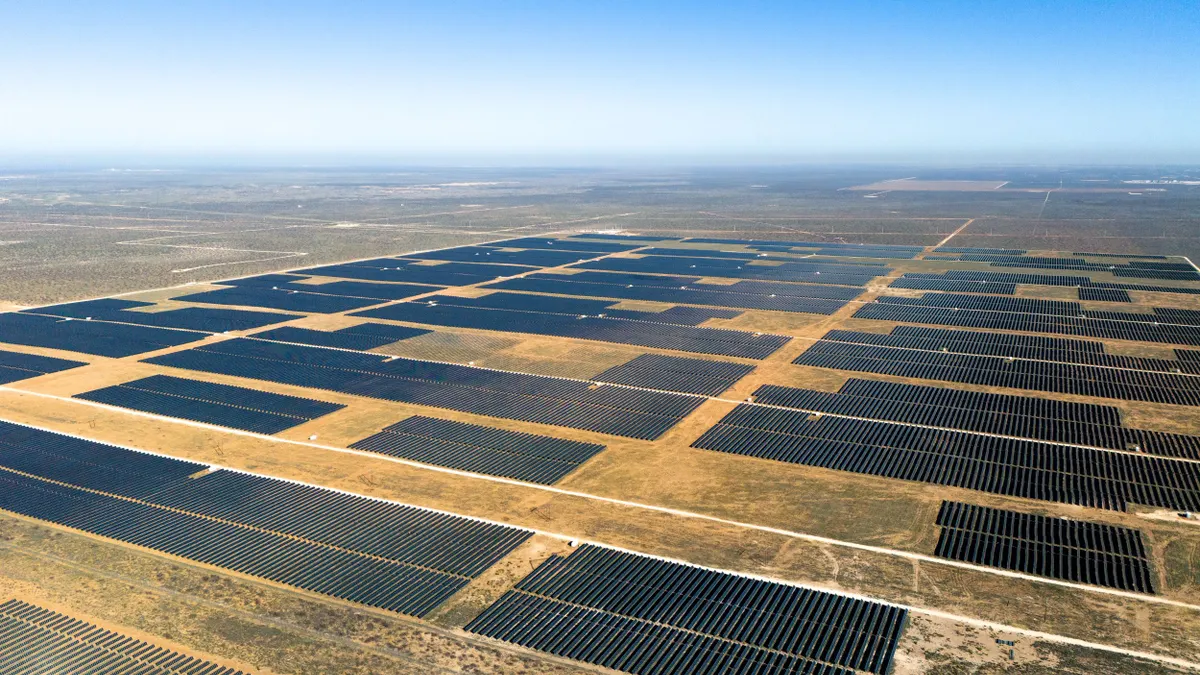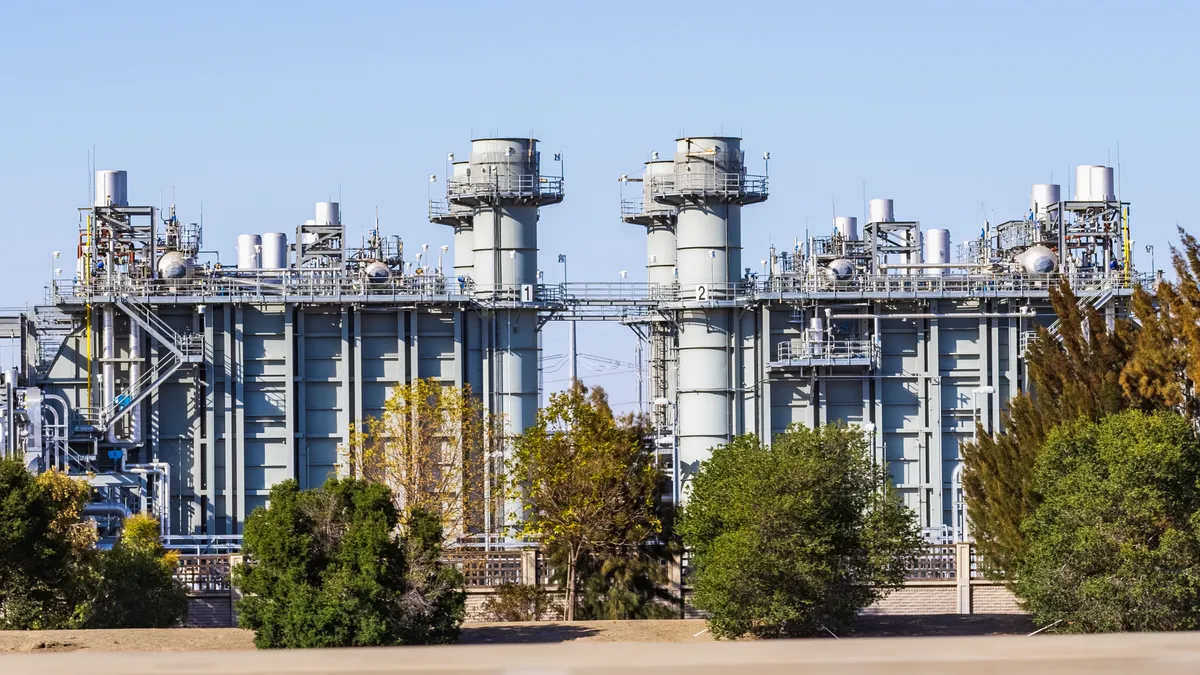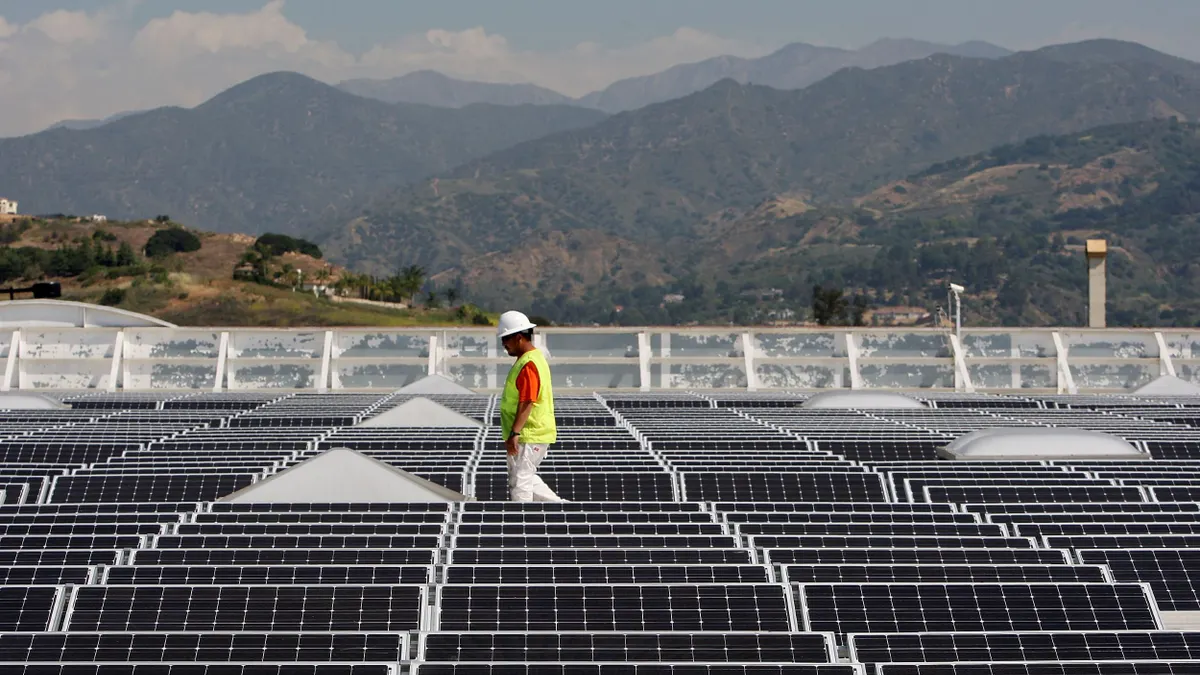On Monday, the Obama administration released its long-awaited rules to regulate carbon from existing power plants. The finalized rules are slightly stronger in terms of emissions reductions than the draft proposal, targeting a 32% decline in carbon emissions over 2005 levels by 2030, instead of the 30% that was originally planned.
The core pieces of the regulation remained the same: States are still assigned individual emissions targets and are given flexibility in deciding how to meet them. If states refuse to file an emissions reduction plan — or file an inadequate one — the EPA will assign a federal implementation plan (FIP) that will get them to their emissions targets.
But beyond that basic structure, the finalized rule also includes some significant changes for the power sector. How the EPA rules handle and value renewable generation, natural gas, nuclear and efficiency all changed in the final rule, as well as the timeline for implementation. All those revisions, however, may end up being less important than the federal implementation plan the agency released alongside the final rule. Here’s what you need to know about each.
Setting state standards
The EPA has altered the way it sets emission benchmarks for states to make them more uniform throughout the nation, Vox’s Brad Plumer pointed out in an invaluable explainer on Tuesday.
Rather than setting emission reduction goals for power plants on a state-by-state basis — which resulted in some wildly divergent expectations for different states — the EPA elected to establish “uniform rates” across the nation for all coal and gas plants, the agency wrote in the final rule.
To do that, they calculated the average emissions rates for gas and coal plants in each of the nation’s three major power regions — the Eastern and Western interconnections, and the ERCOT market in Texas. In the Eastern Interconnect, the EPA found that the average coal plant emitted 2,160 lbs of CO2 per MWh in 2012, while the average combined cycle gas plant emitted 894 lbs per MWh. That became the starting point for emissions reduction.
Then, using the three building blocks in the plan — focusing on coal plant efficiencies, boosting natural gas use, and increasing renewables — the agency estimated how much pollution the states can cut at a “reasonable” cost. Since the planned emissions cuts for the Eastern Interconnect were the least stringent out of the three regions, the agency applied those numbers to the entire nation.
Using their estimates for cost-effective reductions under the three building blocks (the fourth block in the proposed regulation, energy efficiency, was abandoned — more on that later), the EPA calculated that the average coal plant would go from 2,160 lbs per MWh down to 1,305 — partially, Plumer points out, because that number factors in the growth of clean energy outside the power plant as well. The average gas plant goes from 894 lbs per MWh down to 771 lbs per MWh.
EPA then applied those emissions rate goals to every state in the nation. No matter how much coal and gas generation a state had to begin with, they all are subject to the same goals for emissions rates. Or, as the agency put it, the state goals are “equal to the weighted aggregate of the two emission performance rates applied to the [electric generating units] in each state.”
“They did a much more broad regional approach with respect to the building blocks, and then brought that back to each state’s generation situation,” Ken Colburn, a principal at the Regulatory Assistance Project, told Utility Dive. “The combination of the state situation and the national overlay led to an individual state number.”
As Politico’s Mike Grunwald noted, this method of determining state emissions goals creates a more uniform picture, but it also penalizes the most coal-reliant states much more than the draft proposal did. When the agency analyzed states on an individual basis to determine their goals, they could be more sensitive to cost concerns at the state level. But when the emissions targets are determined by the Eastern Interconnect numbers, the dirtiest states don’t get off so easily.
North Dakota, Grunwald points out, would have had to cut 10.6% of its emissions under the draft proposal, but now will need to cut them 44.9% thanks to the new methodology. Other coal heavy states face a similar fate. While Montana was told to cut emissions 21% by the draft proposal, the final plan calls for a 47% reduction in CO2 emissions. For South Dakota, the number jumped from 35% to 48%.
At the same time, the new emissions calculations did make things easier for some states. Washington, which was slated to cut carbon by 72% in the draft proposal, had its target cut to 37% by the final plan. An excellent map of all the state emissions rates is available at Grist.
Timeline and reliability changes
Even before the new emissions calculations were unveiled in the new plan, coal-heavy states and utilities were clamoring for more time to implement emissions cuts. Beginning the compliance period, when states would have to begin showing meaningful emissions reductions, in 2020 was simply too fast to build out the necessary infrastructure for compliance, they said in comments on the EPA’s draft proposal.
The EPA responded directly to such concerns in its final rule, giving states until September 2018 to file final compliance plans, and pushing back the start of the compliance period to 2022.
The change is meant to help ensure reliability by giving states more time to prepare, but as Thaddeus Lightfoot, a partner at the firm Dorsey Whitney, explained to Utility Dive, it’s also a legal maneuver.
Moving the plan forward as quickly as the agency did in the draft proposal could be seen as “arbitrary and capricious” to a federal judge or the Supreme Court, Lightfoot suggested, and that was one of the biggest worries about the rule’s legality.
“It’s clear after reading the comments of states and others, [EPA has] taken great strides to remove the objection of arbitrary and capricious nature of the plan based on the schedule,” Lightfoot said.
In another nod to reliability concerns, the agency included a “reliability safety valve” in the final rule. In the event of a grid emergency, such as an extreme weather event, states can appeal to their regional grid operator to get a waiver to let coal and gas plants run harder or more often than they would normally. After the event is over, those emissions can be "smoothed out over these long averaging times” throughout the life of the rule, Janet McCabe, acting assistant administrator for the EPA’s Office of Air and Radiation, said at the rule’s unveiling Monday.
Renewables and natural gas
The EPA’s draft proposal last year estimated that by 2030, 22% of the nation’s electricity would come from renewable resources. Thanks to the rapid drop in price of wind and solar over the past year, the agency raised the bar in the final rule, calculating that the share of renewables will be 28% by 2030 under the plan.
In practice, that’s little more than an estimate based on market forces and the continuing decline of clean energy prices. States are responsible for identifying how to best meet emissions goals, and the EPA isn’t mandating specific changes to the fuel mix, only that the states meet their emissions targets with the fuel mix they choose.
But that doesn’t mean the agency can’t incentivize clean energy. In a nod to environmentalists, who complained that the proposed rule put too much emphasis on natural gas instead of renewables, the final plan includes a provision for a Clean Energy Incentive Program, which provides credits for states to invest in renewables or energy efficiency in the two years before the compliance period begins in 2022.
While he welcomed the idea of the incentive program, Colburn noted that beginning the credits in 2020 could disincentivize some efficiency and renewables investments in the years leading up to that date.
“What will that mean for renewables in 2017 or 2018? What will that mean for efficiency efforts in 2019?” he wondered. “It’s not unreasonable for states or parties that could monetize those benefits under the Clean Power Plan to wait until they count, so we may see a 4-5 year hiatus in renewables growth.”
While the agency appears to be putting more emphasis on renewables in the final plan, it comes at the expense of natural gas, long considered a “bridge fuel” from the coal-based grid to a cleaner one. While the EPA projected robust growth for gas as a result of the proposed rule, it now estimates that the growth of the resource will be consistent with “business as usual” — that is, the plan itself won’t boost its growth over what would already be happening. That’s not because the EPA is putting less emphasis on gas — it’s still a building block, after all — but is due more to the agency’s estimates of how fast renewables will grow under the plan, cutting into gas’s share of the fuel mix.
Nuclear
Another big change in the final plan was how the EPA accounts for nuclear power. Five new nuclear plants are currently under construction in Tennessee, South Carolina and Georgia, and in the proposed rule, the agency counted those plants as part of the emissions baseline for each of those states. That meant that the states would get no credit under the Clean Power Plan for the thousands of megawatts of carbon-free power the plants would provide when they come online.
The states and nuclear-heavy utilities took special exception to that part of the rule, and the agency responded, allowing the states to get credit for in-construction nuclear plants under the final plan. But the EPA stopped short of including calculations for nuclear plants in their baseline emissions rates for each state. While existing nuclear generation does keep CO2 emissions lower than they would otherwise be, the EPA said in its rule that the existing plants do not further reduce emissions. Because of that, it would be “inappropriate” to use existing nuclear generation to lower the carbon targets for states.
The nuclear industry responded with disappointment, especially at the fact that nuclear plants that get relicensed to run for decades longer than planned will not be given CO2 credits to help states comply with the Clean Power Plan. If states elect to expand nuclear plants, however, the new generation that’s added can count toward state emission goals.
"What the final rule fails to recognize is that CO2 emissions will be significantly higher if existing nuclear power plants shut down prematurely," Marvin Fertel, President and CEO of the Nuclear Energy Institute, said in a statement. "Nuclear power plant operation beyond 40 years, and certainly beyond 60 years, cannot be treated as a foregone conclusion.”
Energy efficiency
Originally, the Clean Power Plan included four building blocks for determining emissions goals for states, and the fourth was based on energy efficiency improvements. The EPA jettisoned that entire building block, which used calculations on how much states could cut demand-side energy use to help determine their pollution targets, in the final rule.
That part of the rule was heavily criticised by the plan’s detractors because it reaches far beyond the “fence line” of the power plant — EPA’s traditional regulatory authority — and into the broader economy. The agency may have eliminated it to shore up the plan against legal challenges, experts suggest. As E&E points out, a recent Supreme Court decision in the case Utility Air Regulatory Group vs. EPA raised significant questions as to whether the agency could get away with such a reach.
"Scalia certainly signaled he would find that illegal," Robert Percival, an environmental law professor at the University of Maryland Francis King Carey School of Law, told E&E. "I think this is an example of EPA listening to the comments and recognizing that this is the most legally vulnerable part of the plan. This makes it much more legally defensible."
Lightfoot agreed with that reading of the building block’s elimination, adding that “part of it too may be the difficulty for EPA in dealing with those efficiency standards. That is a complex and highly technical program that may have slowed implementation.”
Energy efficiency advocates have thus far reacted positively to the change, as efficiency will remain a compliance option for states to reduce emissions in their implementation plans.
“EPA and the president have made it clear that investing in energy efficiency will be a major opportunity for states looking for ways to comply with the Clean Power Plan rule,” said Steven Nadel, executive director of the American Council for an Energy Efficient Economy, in a statement. “The inclusion of energy efficiency in compliance plans is much more important than whether energy efficiency is used in EPA calculations to develop individual state targets.”
The federal implementation plan
Perhaps the most significant change of all in the final Clean Power Plan was the EPA’s release of a federal implementation plan (FIP) alongside the final regulatory package on Monday. Usually, an FIP is a tool for coercion — it’s what states get if they refuse to file a compliance plan or file an inadequate one. But here, it’s also a teaching tool.
The FIP’s premise is simple: If states refuse to comply, they will be opted-in to a cap-and-trade system for pollution abatement. EPA would either assign a cap on emissions and allow for trading across states, or require a state to meet a set emissions rate across its entire power plant fleet. The agency, E&E reports, will decide on a final approach in summer 2016, shortly before the first state plans are due in September of that year.
The elegance in the federal proposal, Colburn said, is two-fold. First, it would place intransigent states in a carbon trading system without the need for any new legislation or interstate compacts. Second, it provides states with a model for what the EPA wants in an implementation plan as regulators around the nation get ready to write them.
“It was the concept of those who have been promoting trading ready plans that by using the same definitions and quantifications and so forth, we would be all on the same page and thus could readily join a multi-state effort,” Colburn said. “It appears to me what EPA has done is said, ‘We agree, and you don’t need to join anything officially, you’re just in.’”
“That’s what strikes me as startlingly elegant,” he said.
Colburn, a veteran New England air regulator, said that with the FIP, the EPA is giving states some needed direction in their compliance plans. With so much flexibility in the final regulation, he said some states will find it useful to have a model as they get together to write their own compliance proposals.
“What they’re saying is, ‘If you don’t submit a plan or don’t submit an approvable plan, this is what we’re going to do, and if in the process of developing your plan, you'd like to see what we’re going to do, and maybe key off of some of that, feel free to read this material and use it,’” Colburn said. “It’s sort of their guide path and wrist slap all in one.”
The electric utility industry, by and large, reacted tepidly to the release of the final plan, with the trade group for investor-owned utilities offering some kind words for the EPA’s revisions.
“The final guidelines appear to contain a range of tools to maintain reliability and better reflect how the interconnected power system operates,” Tom Kuhn, president of the Edison Electric Institute said. The agency “seems to have responded to some of our key concerns.





















